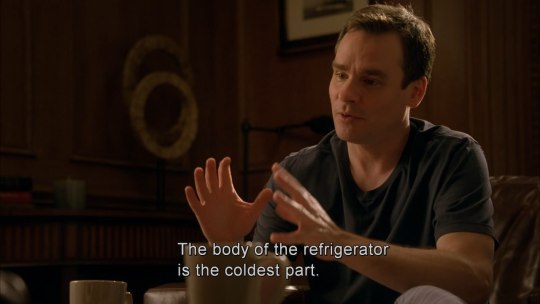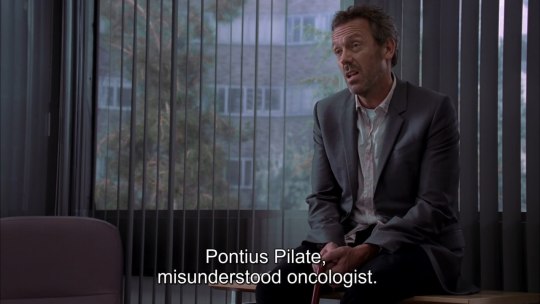#gregory the great
Text
I'm honestly always thinking about how Gregory the Great was in so much pain from his chronic issues that he couldn't leave his bed, and he wrote 35 volumes about Job, who is the biblical poster child of suffering while keeping the faith.
Gregory thought the world was ending. The Lombards were attacking, the empire had long since abandoned the city of Rome, there was famine, and several plague outbreaks. The barbarians were heretics or schismatic, and all he could do was write letters across the continent asking for someone to care about order and God. He was trying to prioritize charity, along with hierarchy. He wrote a lot about miracles and saints, the ideal bishop, and so on.
But he also wrote about suffering having meaning while bedridden at the end of the world. He dedicated it to his special friend, Leander of Seville, who also was suffering chronic pain. The letters that Gregory sent to him were extremely sweet.
Anyway, as a person who also has chronic pain, this was a very unique topic to learn about.
281 notes
·
View notes
Text
2023 SEPTEMBER 20 Wednesday
"Learn to be foolish in your own selves, that ye may be truly wise in God."
~ Saint Gregory the Great, Book XIII (paraphrasing Job 17:10)
#bible#gospel#further reading#Saint#Gregory the Great#Book XIII#Book of Job#learn#foolish#self#wise#God#Lord#Jesus#Christ
2 notes
·
View notes
Text
Immediately
The life of St. Benedict, as described by Pope Gregory the Great, is a story with many miracles and many interventions by God himself in the lives of monks and people. There is a special feature in this story: whenever Benedict prays for help in a difficult situation, God acts fast and immediately. In Latin it is called “subito” or “protinus”, “celeriter” or “festinatio”.
This characteristic…

View On WordPress
0 notes
Text
Examine the thoughts that you keep rolling in your mind. One thinks of honours, another of money, another of increasing his properties. All these things are low, and when the mind is invested in them, it bends itself.
Gregory the Great, Homily 31
0 notes
Text

THE DESCRIPTION OF SAINT GREGORY THE GREAT (Pope St. Gregory I)
The Architect of the Gregorian Chant
Feast Day: September 3
"Blessed Gregory, raised upon the throne of Peter, sought always the beauty of the Lord and lived in celebration of that love." -Entrance Antiphon
One of the greatest Popes and one of the Latin Fathers was born Gregorius Anicius in Rome of a patrician family in 540 AD. His father, Gordianus, a patrician who served as a senator and for a time was the Prefect of the City of Rome, also held the position of Regionarius in the church, though nothing further is known about that position. Gregory's mother, Silvia, was well-born, and had a married sister, Pateria, in Sicily. His mother and two paternal aunts are honored by Catholic and Orthodox churches as saints. Gregory's great-great-grandfather had been Pope Felix III, the nominee of the Gothic king, Theodoric. Gregory's election to the throne of St. Peter made his family the most distinguished clerical dynasty of the period.
At 35, After five years of brilliant service as perfect, he gave up all his possessions and became a monk.
In the year 590, Gregory, at that time as a simple deacon, was elected Pope by popular acclamation to succeed Pope Pelagius II, when the latter died of the plague spreading through the city. Gregory was approved by an Imperial iussio from Constantinople the following September (as was the norm during the Byzantine Papacy). He tried to run away from the city, but was forcibly carried to the Basilica of St. Peter. where he was consecrated. Gregory now began a tireless apostolate that merited for him the title the 'Great'.
He is commonly credited with founding the medieval papacy and so many attribute the beginning of medieval spirituality to him, and is the only pope between the fifth and the eleventh centuries whose correspondence and writings have survived enough to form a comprehensive corpus. This includes: Magna Moralia (Commentary of Job), The Book of Pastoral Rule (Liber Regulae Pastoralis), the Dialogues (a collection of four books), and sermons (including the Homilae in Hiezechielem (Homilies on Ezekiel)).
Gregory was among those who identified Mary Magdalene with Mary of Bethany, whom, in the Holy Gospel of John (12:1-8), recounts as having anointed Jesus with precious ointment, an event that some interpret as being the same as the anointing of Jesus performed by a woman that Luke (alone among the synoptic Gospels) recounts as sinful.
He faced numerous challenges, including those posed by the Lombards, who sought to control Italy and practiced Arianism, and those posed by the Byzantines, who employed strategies that were designed to protect Ravenna, the administrative center of Byzantine government in Italy, at the expense of Rome. Indeed, both Lombards and Byzantines posed threats: the sedition of imperial soldiers was as troubling as the swords of the Lombards.
He used the proceeds of the collapse of the Roman Empire, he took over the task of protecting the people from the barbarians. He also introduced the so called 'Gregorian Chant' in the Liturgy and sent the first missionaries to evangelize in England.
Despite his prestige, Gregory called himself 'Servus Servorum Dei - Servant of the Servants of God' - a title still retained by his successors.
During a penitential procession, which the pope had called to stop a deadly pestilence, the archangel Michael appeared sheathing his sword on the top of Hadrian's Mausoleum (now Castel Sant' Angelo), signifying the end of God's punishment. In gratitude, a bronze angel was built on the mausoleum, depicting Michael replacing his sword in its scabbard. The Seven Penitential Psalms associated with this procession date from the 12th century and have been incorrectly ascribed to Gregory.
The tradition of the 'Thirty Gregorian Masses' is connected with Justus, one of Gregory's monks, who died without confessing that he had secretly three golden crowns. After offering 30 consecutive Masses for his eternal salvation, Justus appeared to one of the brothers, assuring him that he had been released from all torments.
Gregory felt that he was part of a Christian empire, a 'holy commonwealth' headed by the Byzantine emperor. Ideally, the emperor deferred to the church (though generally he did not), even as the church recognized him as a power ordained by God (for good or evil). Ambivalence dictated discretion: Gregory would execute obnoxious laws (such as Emperor Maurice's prohibition of monastic life for state employees) while simultaneously protesting such laws. He explained this practice in one of his letters: 'I have thus done my duty on both sides. I have obeyed the emperor, and yet have not restrained what ought to be said on God’s behalf.' He often protested Maurice's policies regarding the Lombards and the church, and his dislike of Maurice explains his warm welcome to Phocas, the bloody usurper of the imperial throne, in 602.
Gregory died in Rome on March 12, 604 AD at the age of 63 or 64, and was immediately canonized as a saint by popular acclamation. He was one of the two Popes in history who were titled 'The Great', and is proclaimed Doctor of the Church in 1298.
#random stuff#catholic#catholic saints#pope gregory i#gregory the great#gregory the dialogist#san gregorio magno#gregorian chant
0 notes
Text
Gregory I: Some Call Him Great
Some would call him Gregory the Great (c. A.D 540-March 12, 604). Others would call him the first pope. I would not give him either of those terms but that doesn’t mean that he should be dismissed completely. Indeed, on an issue much needed in our day, repentance, I would call him a genius.
“Repentance is weeping for what one has doneand not doing what one weeps for.”
Gregory I
“God grant us…

View On WordPress
0 notes
Video
youtube
An Actual Field Hospital: Certainly a great ministry but an even more powerful metaphor for the mission of the Church.
When Pope Francis introduced the metaphor of the “Field Hospital” as a vision for what the Church should be, I was elated. This metaphor highlights the social ministry function of the Church as a Church whose mission is to address the suffering needs of the community. As one who closely identifies with this aspect of its ministry I felt very close to the vision that Pope Francis had for the Church.
I thought it amazing that in responding to Pope Francis’ guiding metaphor, Sister Lucia has taken the metaphor literally and proposed an actual field hospital. With the war in the Ukraine operating an actual field hospital is a perfect response to be present in both healing the wounds and warming the hearts of those in the midst of conflict.
For me, however, the metaphor speaks to me as a way of promoting the social ministry of the Church. A ministry that engages the social issues that cry out to God, issues of poverty, isolation and suffering. The metaphor also resonated very closely to the vision of the Church that my favorite Pontiff had back in the late 6th Century. Pope Gregory the Great was responsible for publishing a book on Pastoral Care that became a practical guide for ecclesial administration throughout early Medieval Europe. Gregory’s most prevalent metaphor for his treatise was medical. Consider how he defines the practice of pastoral care:
No one ventures to teach any art unless he has learned it after deep thought. With what rashness, then, would the pastoral office be undertaken by the unfit, seeing that the government of souls is the art of arts! For who does not realise that the wounds of the mind are more hidden than the internal wounds of the body? Yet, although those who have no knowledge of the powers of drugs shrink from giving themselves out as physicians of the flesh, people who are utterly ignorant of spiritual precepts are often not afraid of professing themselves to be physicians of the heart, and though, by divine ordinance, those now in the highest positions are disposed to show a regard for religion, some there are who aspire to glory and esteem by an outward show of authority within the holy Church. (PC 1.1.)
Then see how Gregory treats the art of pastoral care in offering spiritual direction. Again we see the medical metaphor being used here.
Wherefore let the good feel you sweet, the bad a corrector. And even in correction know that this order should be observed, that you should love persons and visit faults; lest, if you should perchance be disposed to act otherwise, correction should pass into cruelty, and you should destroy those whom you desire to amend. For you ought so to cut away a sore as not to run the risk of ulcerating what is sound; lest, if you press in the steel more than the case requires, you injure him whom you are in haste to benefit. - letter to Abbot Conon
The metaphor of a field hospital allows you to see the mission of the Church in a holistic and personalized way. Today we know that dire poverty is often linked with some mental health issue. We know that anxiety and depression are on the rise and this will have socio-economic repercussions. The guiding metaphor trains us to look to both the social and spiritual (mental and emotional) issues that cause members of our community to suffer and to be holistic of how we engage them. At the same time, Pope Gregory recognizes that the way we treat those who suffer needs to be personalized. We have to be attentive to how we can guide those who are in pain so we can treat their condition/situation. In the second quote you see how Pope Gregory utilized the medical metaphor to prescribe personalized responses to help build up those who are in need of spiritual direction. For Pope Gregory, and for Pope Francis, this means that we need to apply sweet yet stern bedside manners.
The “field hospital” metaphor has much to offer us as we try to bring social and spiritual ministries of the Church together. Pope Gregory utilized this metaphor in this way and Pope Francis definitely sees the need for bringing this to our attention today.

0 notes
Photo










“Are you crying from Ace Attorney sprites?”
“The way that our mannerisms are a reflection of the people we are surrounded by got to me.”
“All right.”
#ace attorney#pwaa#ajaa#phoenix wright#apollo justice#miles edgeworth in#miles edgeworth#ace attorney investigations#aai#aai2#aai2 spoilers#maya fey#mia fey#pearl fey#gregory edgeworth#edgeworth family#von karma family#dgs#the great ace attorney#tgaa#tgaac#great ace attorney#ryunosuke naruhodo#ryuunosuke naruhodou#herlock sholmes#sherlock holmes#iris watson#iris wilson#raymond shields#trucy wright
17K notes
·
View notes
Text

they're bonding so quickly
#they make a great duo KJSDFSFD#freddy come and get your chaotic boyfriend and son#fuckin love these meme i had to use this for them its not dead yet okay-#art#fnaf#fnaf security breach#glamrock bonnie#evil!bonnie#fnaf au#fnaf gregory
1K notes
·
View notes
Photo

Read Chapter 11 here!
A hall of old bones and fresh wounds, abandonment and rot. The music plays but all that can be heard is static, a soundtrack for sickening implications.
It looks just like home.
#fanfic:PermissionSlip#fnaf security breach#fnaf moon#fnaf gregory#a storm knocked out the internet while i was wrapping it up#im uploading this via hotspot#EVENTUALLY I wanna have covers for all the chapters#but this one especially i wanted to get done#so you can tell things in the fic are going great#art
4K notes
·
View notes
Text










Liners
#acontextual house#house md#gregory house#james wilson#chris taub#robert chase#i cant explain how funny refrigerator line is to me#the outfit chase has on is a great representation of something cruel yet funny#serve king#that's an order#i have to get some sort of reward for putting penis and vagina in the same post... hope it's not a community label#longpost#long post#fuck me i cant decide which long_post tag to drop they're like brothers to me
2K notes
·
View notes
Text
I know this is a bit off topic for this blog, but is anyone else getting certain vibes from Gregory the Great and Leander of Seville?
7 notes
·
View notes
Text
2023 JUNE 05 Monday
"Holy Church, [keep] vigorousness of discipline together with an union of gentleness."
~ Saint Gregory the Great,
Book XIII, para 212 Morals on the Book of Job
#bible#gospel#further reading#Saint#Gregory the Great#Holy Church#keep#vigorousness#discipline#together#union#gentleness#God#Lord#Jesus#Christ
3 notes
·
View notes
Text
we as a fandom do not talk about this scene enough. what the fuck is this. why did he feel the need to install this? so he could stare at his boybestfriend all day without having to get up?
#gregory house i know what you are.#does this even ever get mentioned again?#like oh yes this Totally Straight Man spent actual days around very loud noise (which he loathes) but he's adding something totally cool to#the office right?? it's gonna be so so fun and great right?? to make all that hell noise worth it???#like in the eps before that the sound of the ortho saw things drove him insane#but this? totally fine#because it's worth it!#i mean come on. how are we supposed to take this. “oh he just wants to piss wilson off” WRONG.#wilson seems mildly annoyed at best. he's used to this. this is Normal just another day of being friends with house#but look at house's pleased little face. his stupid smile. i'm going to commit atrocities#house md#hate crimes md#james wilson#gregory house#hilson
1K notes
·
View notes
Text


HOUSE MD | 7.05 Unplanned Parenthood
#house md#hilson#house x wilson#houseedit#housemdedit#gregory house#james wilson#this whole arc was just dumb and dumber#what happens when you give two grade A cowardly dumbasses access to thousands of dollars of hospital equipment#7.05#***#overall a very solid episode with a great ending punchline
2K notes
·
View notes
Text






#fnaf#five nights at freddy's#fnaf sb#security breach#memes#time to continue my tradition of making some memes when a new game comes out >:)#spoilers#ruin spoilers#fnaf spoilers#cassie#gregory#roxanne#mimic#maskbot#<- this mf#anyway the dlc is great! loved it sm :)#and yes i am aware that this is not word for word what greg says but <3
1K notes
·
View notes